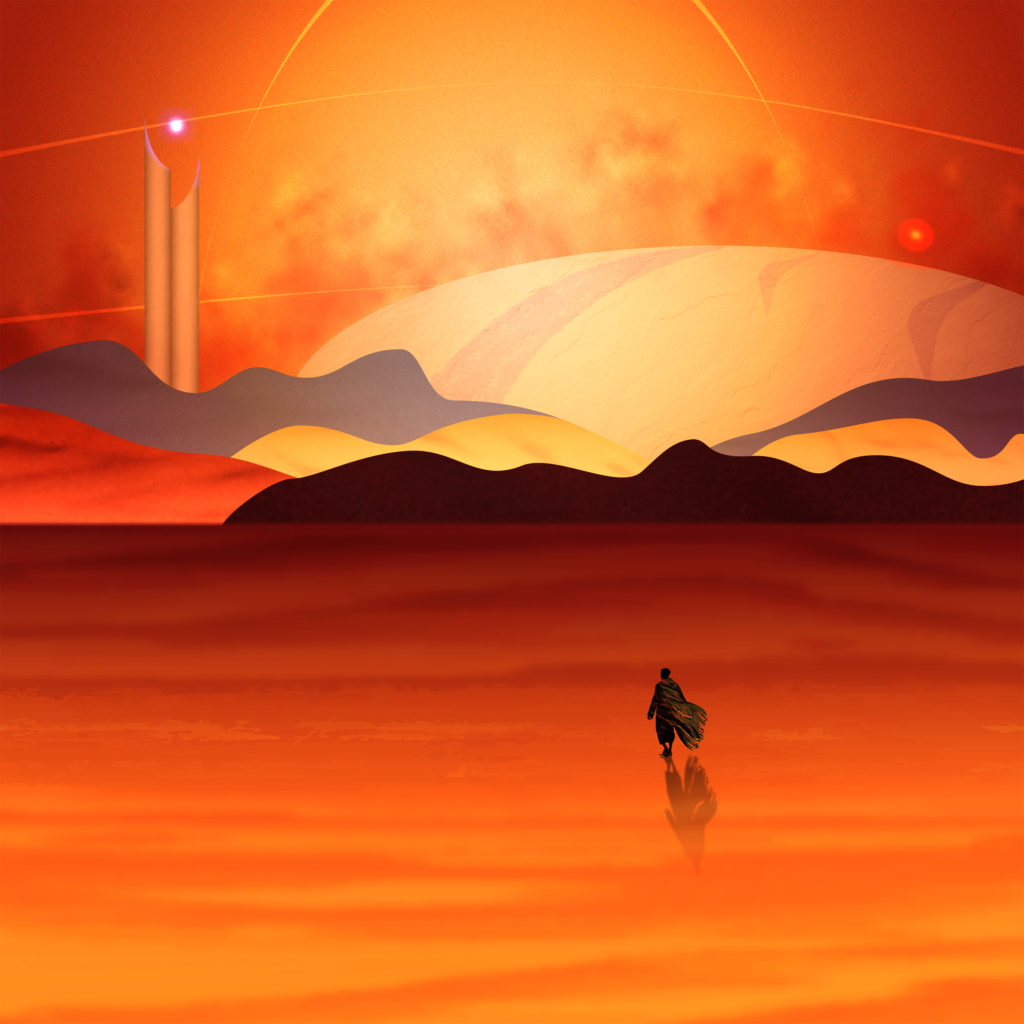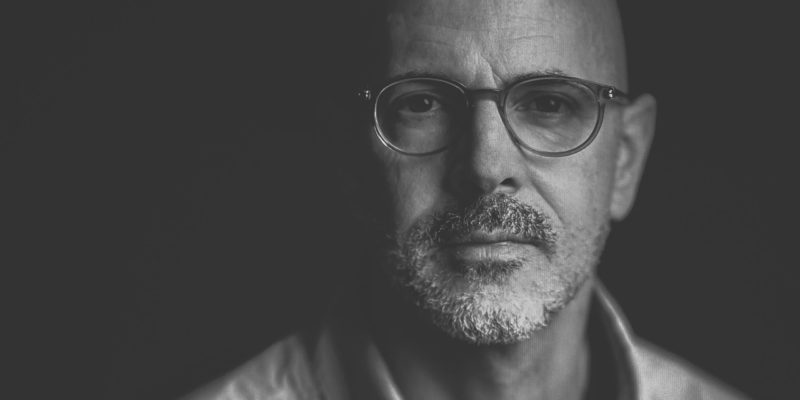Massachusetts producer and artist J + C has released a multitude of original records over the years, culminating in the scattered launch of his latest album Traveler.
We were blessed with the chance to interview Jeff, the man behind the music, to find out more about his journey, what inspires him, his technical approach, and plenty more. Here’s the interview in full.
* * *
Hi Jeff – thanks for your time, excited to talk music with you! To introduce things, where are you based, and who or what first inspired you to make music?
I grew up in Cincinnati, Ohio and now live in Worcester Massachusetts. The thing that initially captured my fascination with music was the strange, powerful and otherworldly sounds of synthesizers. I remember as a little boy hearing the song Daily Nightly by the Monkees, where Micky Dolenz does some crazy work with a Moog. It blew me away. It was unlike anything I had heard before and I loved it. So I started paying more attention to bands making magic with keyboards and synths. ELO’s album Time became a favorite.
I was pretty content with just being a fan of all these different and amazing synth sounds, until I heard Subdivisions by Rush. That’s when something clicked. I knew then that I needed to get my hands on one of these machines and learn how to play it. And I specifically wanted to play that song.
How long have you been making original music, and how often does your approach or what inspires you change?
I got my first “real” synth in 1989, a used Roland Juno 60. That was about seven years after having heard Subdivisions, so there was a lot of pent up creativity and expression dying to get out! And the well still doesn’t feel like it’s drying up anytime soon.
Over the years (decades), I would say the big change in my approach is that these days much of my inspiration derives from intention rather than reaction. For example with Traveler, I began with an overarching theme and then spent time searching for the right sounds and melodies to fit the concept and ideas. Of course, there are still plenty of “reactionary” moments of inspiration — such as from an overheard bit of conversation, a photo, a book or often times just a really interesting sound from one of my synths.
Based on the recent singles from Traveler, your sound has a distinctly nostalgic electronic vibe fused with a clearly imaginative, melodic compositional journey. Fear and Wonder is a rather stunning example. How do you get started with a new piece of music – what are the first steps, and after building things up, how do you know when something is complete?
Fear and Wonder is a hybrid of intentional and reactionary inspiration. I knew in general terms what I wanted to do, and the mood I wanted to create. I believe I even had the basic chord progression figured out. And then as I was exploring sounds, I started playing the Jupiter 8 sound that starts the track and continues throughout. Instantly it became clear that sound would be paramount to the song. As one part is established, my mind becomes free to explore other pieces that can fit around it. This stage can be a little tricky — but fun —as I am trying to find sounds and arrangements that complement each other without getting in the way of each other. In a way, I guess I view each song as its own story, and when I feel that story is told, the song is completed.
For Outmanoeuvred the energy and tone shift entirely. Here we enter a high-octane, industrial dance realm of sorts, but still with that playful creative edge. How different is your mindset when crafting something more upbeat and intense?
I like to keep reminding myself throughout the process about the target energy level for the song. Trying to keep something high-energy, pulsing and pounding for three to four minutes can potentially drift into sounding monotonous. So when I consciously work in arrangements to “break the monotony,” I like to include something, usually subtle, like a fast moving arpeggiation or high hat as a way to keep the energy levels floating high.
What does the Traveler project represent overall – what themes or feelings connect the tracks within?
As a very big fan of prog rock and conceptual albums, I wanted Traveler to represent my most ambitious effort in that genre. I also wanted to blend in sounds and styles from my major influences, including prog rock bands, synth-based cinematic scores and synth-reliant pop and dance bands.
“The protagonist in Traveler finds himself in a strange world; one where he doesn’t know if it’s some sort of safe harbor or a dangerous trap. He begins to believe it is the latter, compounded by the realization that he himself is the architect of this world.”

What are your go-to instruments, both organic and in terms of the software you use to create?
I started with a Roland Juno 60, and now I have a Juno X. It just feels like home to me. I also spend a lot of time playing and creating on the Fantom 6. Power and flexibility in sound design are critical to me, which is why I like those instruments. For the same reason I also love my Prophet 6, which is wonderful for conjuring all sorts of classic, strange or one-of-a-kind sounds.
“A couple years ago, I changed my recording and mixing software, and started using Logic Pro. I am much happier with the results.”
You also recently re-released the older single Red Light – a track featuring a striking contrast between moments of delicacy and distortion, with an almost tropical instrumental twist during the latter half. What is it about this piece that allowed it to remain such a favourite of yours over the years?
Red Light showcases one of my favorite traits of prog rock: the blend of hard, edgy riffs with a counterbalance of moody, atmospheric sections. When done right, the two sides juxtapose each other well. Unfortunately the original recording didn’t quite live up to my expectations, so once I got some experience with Logic Pro under my belt, I decided to rework and remaster the whole thing from all of the original takes.
The remastered version of Red Light is currently on SoundCloud and should be streaming on the major platforms by the end of April.
Do you still listen to music for pleasure, and if so, what qualities would you say make a track or an artist’s work feel timeless?
These days I can’t seem to get enough of Crown Lands. Zombi is another favorite. I wish I knew the formula for timeless work. My best guess is that it is a blend of hitting the listener on both a visceral and cerebral level.
“A catchy hook is one thing, but I suspect when there is an element for the listener to “figure out” mentally, probably with multiple listens, that might be what creates staying power.”
How important is live performance in terms of your role as an artist, and do you have a dream venue or event you’d love to appear at?
I just saw Zombi in a pretty small venue, and I loved it. It was a small room, no chairs at all. It was simply standing room only, right up to the small stage. To me, it was an experience where everyone in the room felt connected with the band. That’s the kind of space where I would like to play. To play out live like that, I would ideally “reimagine” my songs with a full band: drums, bass, guitar and myself. I’m not sure me just standing by myself on a stage surrounded by my machines would make a great show! I have done a few live things on Twitch, and may again in the future.
There’s a cinematic vastness to much of your music – do you imagine visual scenes when you create, and do you aspire to write music for film or other media? If yes, how different is it to compose a piece of music with a given story in mind, than to compose with a completely blank slate?
The right visuals will absolutely help me find the right mood and tone musically. They often feel interconnected to me. Maybe the images are imagined, or ones that I create, such as for the cover of Traveler. A good friend asked me to score some movie projects he was filming at university. And in addition to providing a synopsis of the script, he would include photos not just from the set, but also from the surroundings and environment in which the stories took place. Those photos became an essential touchstone in the process, keeping me focused on the spirit of the project.
What’s your plan of action for the majority of 2024?
My priority will be to finish Traveler. There are two songs yet to come, and I have been busy in the writing process for both of them. This has been an ambitious undertaking, and I will be very satisfied to see it finished.
Further down the road, I have a vague idea about creating songs that can be written and recorded for streaming, but can also be performed in a more open-ended, jam-style format suitable for a live show on Twitch. That might be something more for 2025.
Is there anything else we should know?
My base of operations is my home studio, and currently my home is uninhabitable! In short, the foundation needs massive repairs. So I am currently living elsewhere, unable to do much in the way of recording. I am still playing and writing every day, so I should be ready to hit the ‘Record’ button when the repairs are finally done.
My hope is to record and release the next track from Traveler, Escape Plan, by the end of summer. The final track should follow in the fall.
* * *
Find J + C on Apple, Soundcloud, Bandcamp & Instagram.

